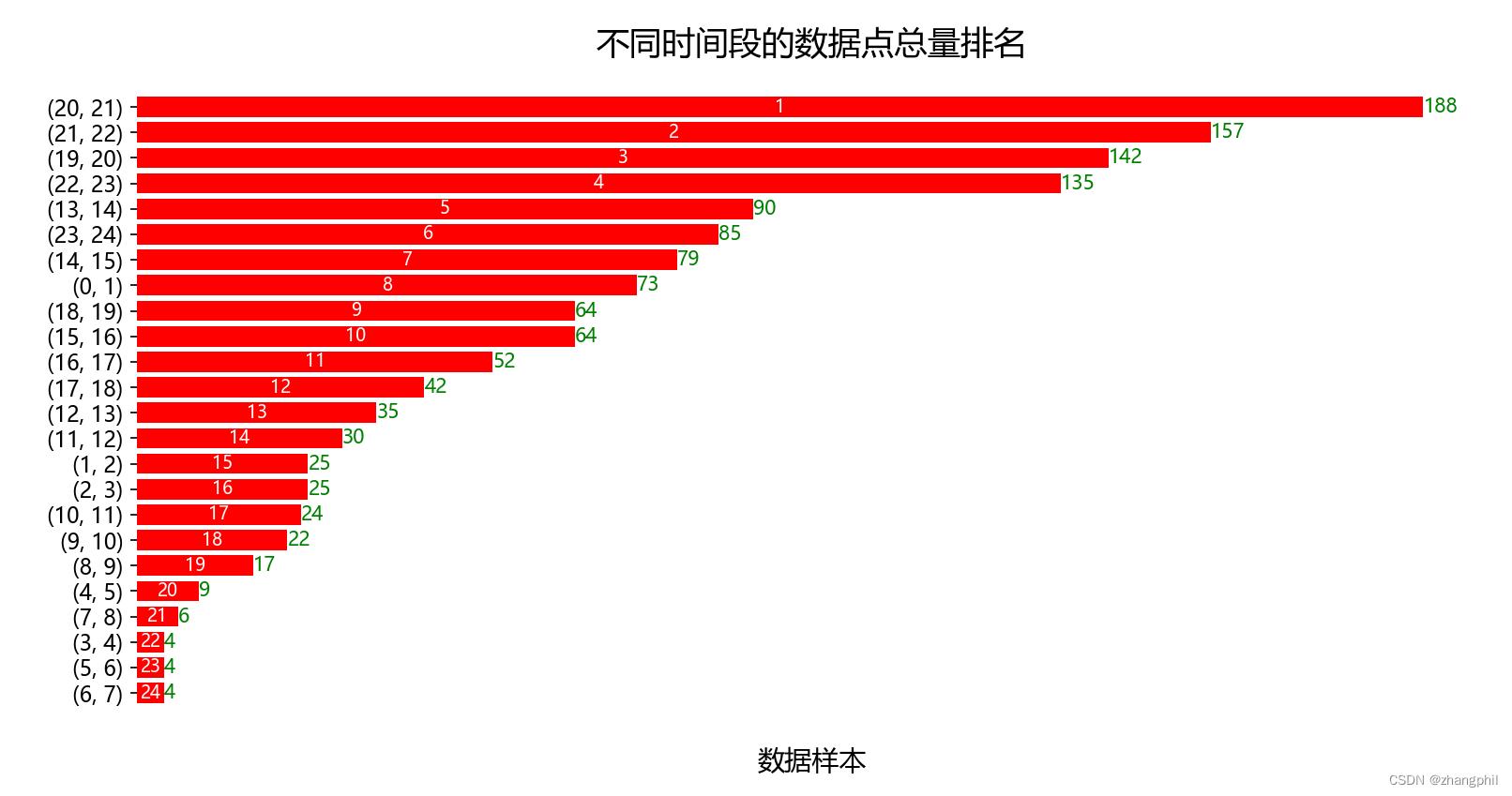[时间维度]日志数据提取事件关键词,解析对应时间点计数,matplotlib绘制统计图,python
Posted zhangphil
tags:
篇首语:本文由小常识网(cha138.com)小编为大家整理,主要介绍了[时间维度]日志数据提取事件关键词,解析对应时间点计数,matplotlib绘制统计图,python相关的知识,希望对你有一定的参考价值。
[时间维度]日志数据提取事件关键词,解析对应时间点计数,matplotlib绘制统计图,python(2)
对上篇的技术实现加以改进:
(1)日期匹配把原先的中文字符年月日时替换掉,用标准的parse匹配。
(2)不再自己实现统计,而是用python的counter统计事件次数。
(3)关键词搜索支持一次性多个匹配查找。
import re
import matplotlib
import matplotlib.pyplot as plt
import dateutil.parser as ps
from collections import Counter
from pprint import pp
import pandas as pd
from fuzzywuzzy import fuzz
FILE_PATH = r'数据文件路径'
KEYS = [r'关键词1', r'关键词2', r'关键词3']
threshold = 90
def change_str(date_s):
date_s = date_s.replace(r'年', '-')
date_s = date_s.replace(r'月', '-')
date_s = date_s.replace(r'日', ' ')
date_s = date_s.replace(r'时', ':')
date_s = date_s.replace(r'分', '')
return date_s
def read_file():
file = open(FILE_PATH, 'r', encoding='UTF-8')
all_case_time = []
case_count = 0
cnt = 0
for line in file:
cnt = cnt + 1
for k in KEYS:
pr = fuzz.partial_ratio(line, k)
if pr >= threshold:
print('-----')
print(f'第case_count件')
case_count = case_count + 1
try:
# 正则匹配 xxxx年xx月xx日xx时xx分
mat = re.search(r'\\d4\\年\\d1,2\\月\\d1,2\\日\\d1,2\\时\\d1,2\\分', line)
t_str = mat.group().replace('\\n', '') # 去掉正则匹配到但是多余的 \\n 换行符
try:
t_str = change_str(t_str)
all_case_time.append(ps.parse(t_str)) # 日期提取出来,放到数组中
except:
print('解析日期失败')
except:
t_str = '-解析异常-'
s = '第number行,相似度ratio,时间:case_time - content'
ss = s.format(number=cnt, ratio=pr, case_time=t_str, content=line)
pp(ss)
break
# 快速调试
#if case_count > 10:
# break
file.close()
return all_case_time
def date_to_points():
date_times = read_file()
hours = []
for i in range(24):
hours.append((i, i + 1))
points = []
for dt in date_times:
for h in hours:
if h[0] <= dt.hour < h[1]:
points.append(h)
break
to_chart(points)
def draw_chart(df):
myfont = matplotlib.font_manager.FontProperties(fname='C:\\Windows\\Fonts\\msyh.ttc')
plt.rcParams['axes.unicode_minus'] = False # 用来正常显示负号
plt.rc('font', family='YaHei', weight='bold')
order = []
name = []
mem = []
for d, i in zip(df.values, df.index):
order.append(i)
name.append(d[0])
mem.append(int(d[1]))
FONT_SIZE = 12
fig, ax = plt.subplots(figsize=(15, 13))
b = ax.barh(y=range(len(name)), width=mem, align='center', color='red')
# 为横向水平的柱图右侧添加数据标签。
i = 0
for rect in b:
w = rect.get_width()
ax.text(x=w, y=rect.get_y() + rect.get_height() / 2, s='%d' % (int(w)),
horizontalalignment='left', verticalalignment='center',
fontproperties=myfont, fontsize=FONT_SIZE - 2, color='green')
ax.text(x=w / 2, y=rect.get_y() + rect.get_height() / 2, s=str(order[i]),
horizontalalignment='center', verticalalignment='center',
fontproperties=myfont, fontsize=FONT_SIZE - 3, color='white')
i = i + 1
ax.set_yticks(range(len(name)))
ax.set_yticklabels(name, fontsize=FONT_SIZE - 1, fontproperties=myfont)
ax.invert_yaxis()
ax.set_xlabel('数据样本', fontsize=FONT_SIZE + 2, fontproperties=myfont)
ax.set_title('不同时间段的数据点总量排名', fontsize=FONT_SIZE + 5, fontproperties=myfont)
# 不要横坐标上的label标签。
plt.xticks(())
# 清除四周的边框线
ax.get_yaxis().set_visible(True)
for spine in ["left", "top", "right", "bottom"]:
ax.spines[spine].set_visible(False)
plt.subplots_adjust(left=0.15) # 调整左侧边距
# ax.margins(y=0.01) #缩放 zoom in
ax.set_aspect('auto')
plt.show()
def to_chart(points):
# 找出出现次数最多的点数
c_xy = Counter(points)
# 再选取前n多的点数
max_count = c_xy.most_common(24)
print('max_count', max_count)
# 数据组装成pandas数据帧。
pd_data = []
total = 0
for mc in max_count:
total = total + mc[1]
pd_data.append([mc[0], mc[1]])
print('总计', total)
col = ['时间段', '时间点次数']
df = pd.DataFrame(data=pd_data, columns=col)
df = df.sort_values(by=col[1], axis=0, ascending=False) # 降序
# 重置索引
df = df.reset_index(drop=True)
df.index = df.index + 1
# 前20
pp(df.head(20))
# pp(df.values)
draw_chart(df)
if __name__ == '__main__':
date_to_points()
输出:
total 1376
...

以上是关于[时间维度]日志数据提取事件关键词,解析对应时间点计数,matplotlib绘制统计图,python的主要内容,如果未能解决你的问题,请参考以下文章
[时间维度]日志数据提取事件关键词,解析对应时间点计数,matplotlib绘制统计图,python
[星期维度]日志数据提取事件关键词,解析对应日期的星期计数,matplotlib绘制统计图,python
[星期维度]日志数据提取事件关键词,解析对应日期的星期计数,matplotlib绘制统计图,python
[月份维度]日志数据提取包含关键词的事件,解析落入的月份计数,matplotlib绘制统计图,python
 https://blog.csdn.net/zhangphil/article/details/125923359
https://blog.csdn.net/zhangphil/article/details/125923359